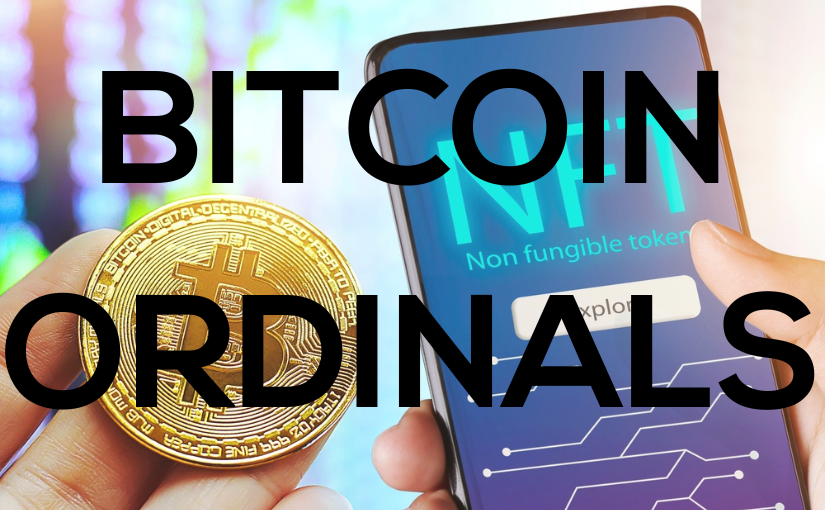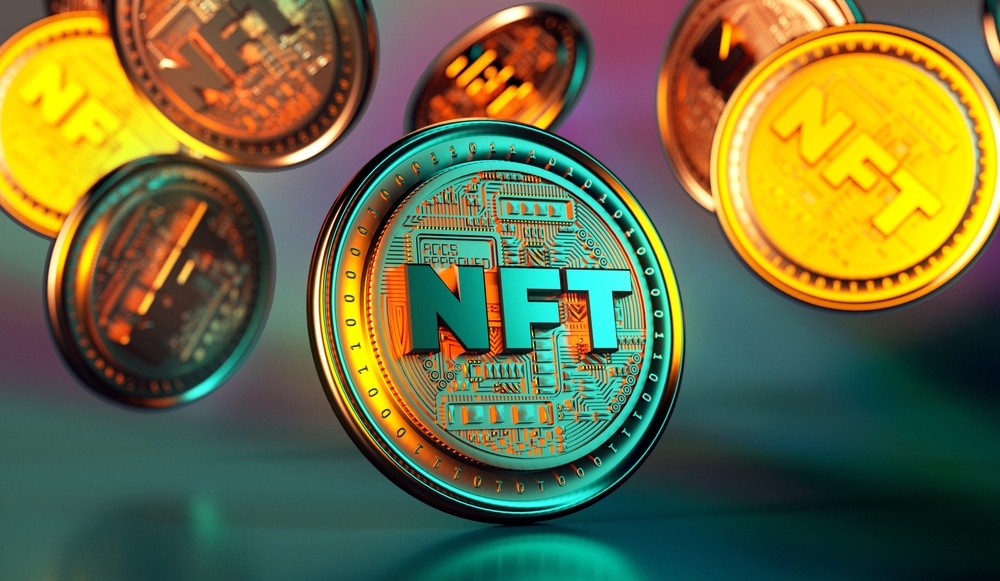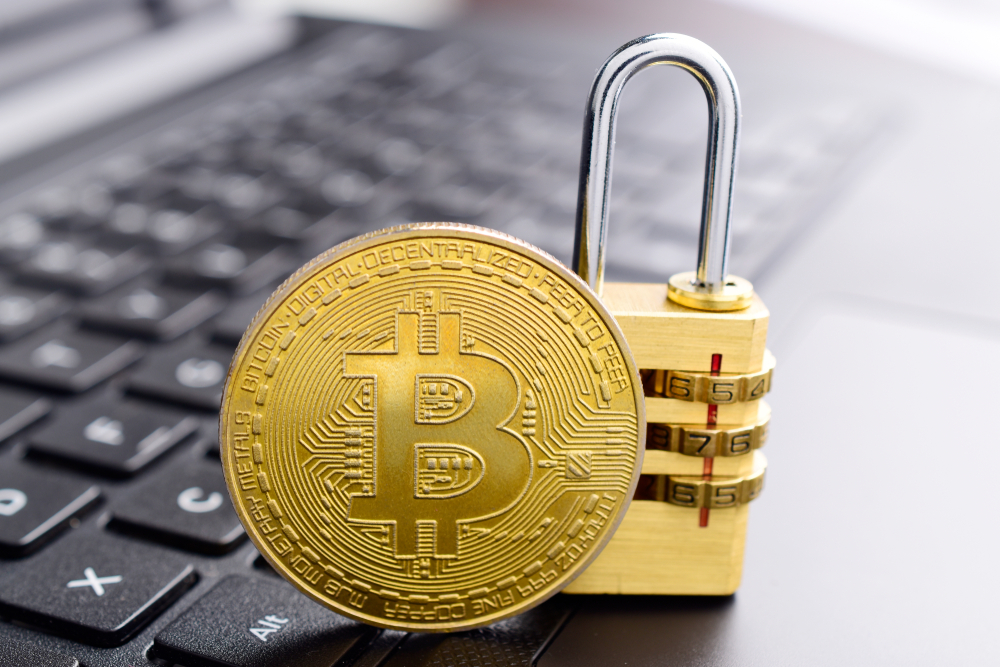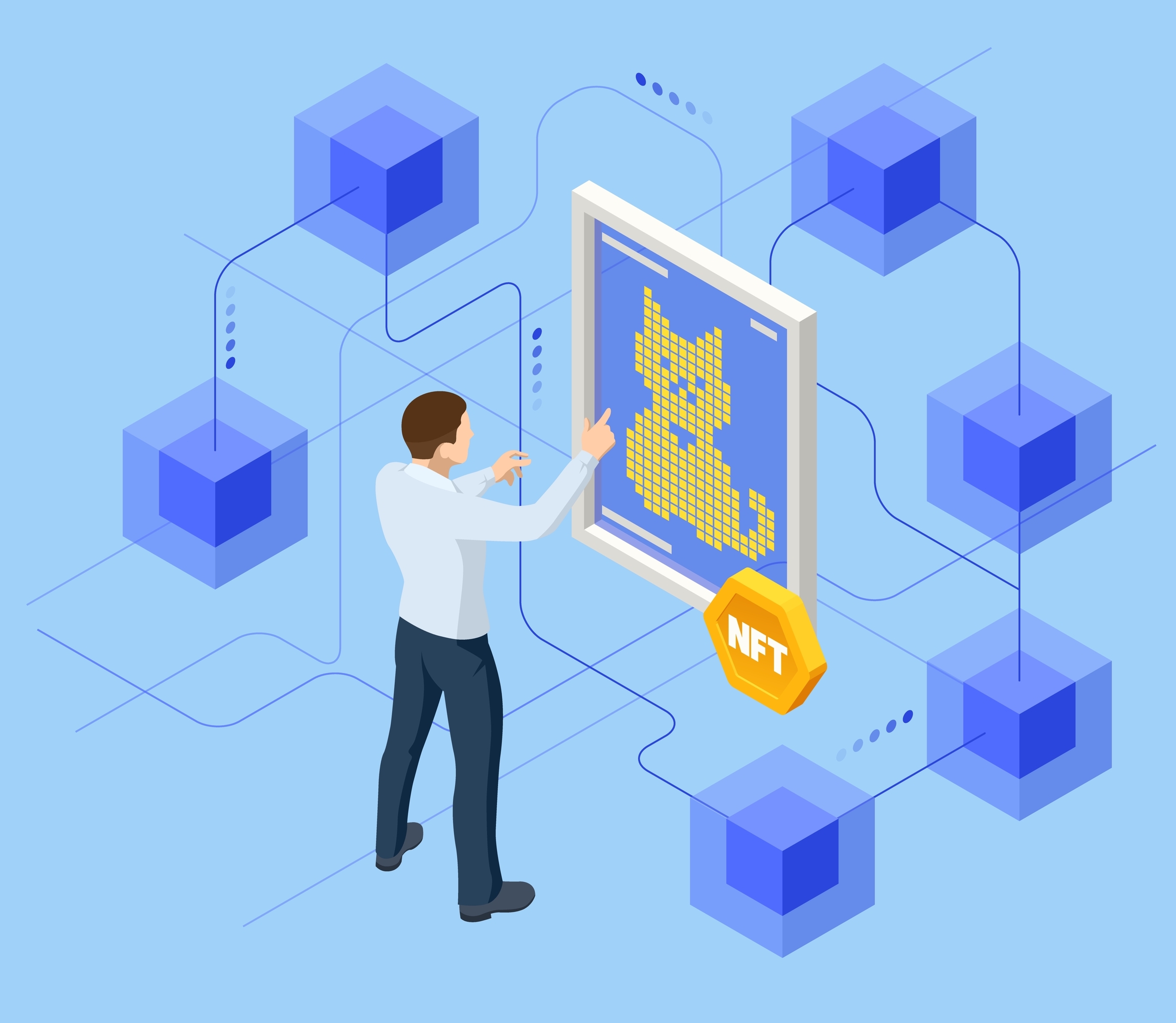Bitcoin Ordinals: Securely Put Your NFTs On-Chain

Have you ever felt uneasy about where your NFTs are actually stored? What if I told you there’s a way to make your NFTs as secure as Bitcoin itself? Sounds like a dream, right? Well, this is where Bitcoin Ordinals come in.
Unlike most NFT systems that rely on external servers or third-party contracts for storage, Bitcoin Ordinals let you inscribe your NFTs directly onto the Bitcoin blockchain. That means it’s not just a fancy token pointing to some image on a random server; it’s the real deal—permanently etched into the Bitcoin ledger.
If you’re wondering how this shakes up the NFT space or why it’s even necessary, let’s look at the flaws in most of today’s NFT systems and why Bitcoin Ordinals might be the solution we’ve all been waiting for.
Why Current NFT Systems Struggle

When you think about owning an NFT, you’d probably assume what you “own” is safe and secure forever, right? Unfortunately, for many current NFTs, that’s far from the truth. Here’s the harsh reality:
- Most NFTs rely on external servers or a centralized storage system for their metadata and artwork.
- If that server goes offline or the company behind it shuts down, your NFT essentially becomes useless. You lose access to the real value tied to it.
- Even with blockchain contracts, in many cases, only the “ownership record” is stored on-chain, not the actual NFT data itself.
Just imagine purchasing a rare collectible NFT for thousands of dollars—only to find out three years later the server storing it has vanished. It’s heartbreaking and honestly, avoidable. With systems like Bitcoin Ordinals, these nightmares can be a thing of the past.
The Promise of Bitcoin Ordinals
Here’s where things get seriously exciting. Bitcoin Ordinals flip the entire script by keeping everything directly on-chain. From your metadata to the digital representation of your NFT, everything is securely inscribed onto the Bitcoin blockchain.
This changes the game in two major ways:
- It ensures permanence. Your NFT lives directly within Bitcoin’s decentralized ledger, which has over a decade of proven resilience.
- It enhances security. By leveraging Bitcoin’s tamper-proof blockchain, you can rest easy knowing your NFT isn’t just secure—it’s as safe as Bitcoin itself.
You’re probably wondering how this is even possible. Don’t worry, we’re just getting started. Coming up next, I’ll break down exactly what Bitcoin Ordinals are, how they revolutionize the NFT world, and why Bitcoin is the perfect platform for this innovation. Ready to see how it all works?
What Are Bitcoin Ordinals?

Let’s break it down: Bitcoin Ordinals are shaking up how NFTs are created and stored. They’re not just riding a trend—they’re redefining what owning an NFT even means. Unlike other systems, Ordinals take your NFT and put it directly on Bitcoin’s legendary blockchain, making it a permanent part of the ledger. But how does that work? Let’s explore the basics.
A New Way To Handle NFTs
Here’s the twist: Ordinals use something called satoshis (the smallest unit of Bitcoin currency) as the foundation for NFTs. Imagine satoshis like tiny digital canvases. Through this groundbreaking approach, NFT data is inscribed permanently onto these satoshis, which means your NFT isn’t dependent on some central server or external storage solution. This changes everything.
Think about the usual NFT systems where artwork or metadata often sits on a third-party server. Ever heard of platforms shutting down or links breaking? That could mean losing access to your NFT. With Bitcoin Ordinals, that risk virtually disappears because your NFT lives directly on the blockchain. Full ownership, no middlemen.
Why Bitcoin Matters Here
Here’s a quote I love from security expert Andreas Antonopoulos:
“Bitcoin’s strongest feature is its reliability; its weakest is its inflexibility. Ordinals manage to merge these beautifully by innovating within Bitcoin’s structure.”
Why should you care? Because of Bitcoin’s reputation. Bitcoin has stood the test of time, solidly remaining the most secure and decentralized blockchain out there. When you store anything on Bitcoin, from transactions to NFTs, you’re automatically tapping into a network that’s proven its reliability over and over again.
The Bitcoin blockchain is safeguarded by an immense global network of miners and secured through powerful cryptography. This is what makes it so appealing for something like NFTs. With Ordinals, you’re essentially tying the value and history of your digital asset to the world’s most trusted blockchain. It’s like upgrading from a lockbox to a high-tech vault that nobody can break into.
How Does Inscription Work?
Alright, let’s get a little technical—but not too much! The magic behind Bitcoin Ordinals became possible after a significant upgrade to Bitcoin’s blockchain called Taproot. Think of Taproot as an enhancement that brought new flexibility, allowing Bitcoin to handle things beyond simple transactions, like embedding NFT data directly on-chain.
Here’s how inscriptions work in a nutshell:
- First, you start with a satoshi. Remember, this is the tiniest unit of Bitcoin.
- Then, NFT data—like an image, video, or piece of code—is inscribed directly onto that satoshi using Taproot-enabled processes.
- This data becomes a permanent part of the Bitcoin blockchain, meaning it’s there forever. It can’t be edited, removed, or lost.
It’s efficient, genius, and surprisingly simple when you think about it. The result? A completely on-chain NFT, as secure as the Bitcoin network itself.
Curious about how these Ordinals stack up against traditional Ethereum-based NFTs? You’re not alone—this is where it gets even more interesting. Ready to compare and see why Bitcoin Ordinals might have the edge? Let’s check it out next.
How Different Are Ordinals From Traditional Ethereum NFTs?

If you’ve ever wondered how Bitcoin Ordinals stack up against NFTs on Ethereum, you’re not alone. Both systems allow for digital ownership, but what’s under the hood is vastly different, and this could impact the way we think of NFTs forever. Let’s break it down so you can see why this matters.
NFT Metadata Storage
Here’s the kicker: most Ethereum-based NFTs don’t actually store the entire file or data on the blockchain. Instead, they rely on external servers or platforms like IPFS (InterPlanetary File System) to store metadata. What does that mean? If something happens to that off-chain storage—goodbye to your precious NFT data.
Now, Bitcoin Ordinals step into the scene with a stronger pitch. With Ordinals, everything, including the artwork and metadata, stays directly on the Bitcoin blockchain. It’s like engraving your digital collectible into stone rather than writing it on a whiteboard that could be wiped clean.
Think about this: would you rather have your NFT stored in a place that might vanish or somewhere as secure and immutable as Bitcoin’s blockchain? The choice feels obvious, right?
Cost Differences
Now let’s talk numbers. Transaction costs on Ethereum have long been a pain point for traders, especially during busy times when gas fees can shoot to absurd levels. Imagine paying $50—or more—just to mint or trade a simple NFT. Painful!
Bitcoin Ordinals aren’t exactly “cheap,” especially for larger files, but they’ve sparked interest by offering a fair cost structure tied to Bitcoin’s own processing fees. Since Bitcoin transactions don’t have dynamic gas fees like Ethereum, the costs remain more predictable. That said, inscriptions of very large files could lead to a higher fee since you’re essentially storing greater amounts of data directly on-chain. But hey, no risk of losing your data sounds worth the price, doesn’t it?
Decentralization & Ownership
Let’s not forget where Bitcoin shines brightest—its decentralization. Bitcoin’s network has stood the test of time, operating with no single point of failure since its launch in 2009. Compare that to Ethereum-based NFTs, which often depend on centralized smart contracts to govern ownership and functionality.
With Ordinals, ownership feels more genuine because the data doesn’t rely on external platforms or smart contract relationships. Once it’s inscribed on the Bitcoin blockchain, it’s yours and it’s on-chain forever. In a world of hacks and rug pulls, this level of control is something Ethereum-based NFTs haven’t quite cracked.
“Decentralization isn’t just a buzzword—it’s your safeguard against losing what’s yours.”
So, does this shift in security and ownership mean Bitcoin Ordinals are bulletproof? Can they truly redefine how we think about NFTs by leveraging Bitcoin’s unparalleled reliability? Stay tuned—there’s more to uncover in terms of what makes Bitcoin Ordinals a fortress for your digital assets.
Are Ordinals Truly Secure on the Bitcoin Blockchain?

When it comes to NFTs, the word “secure” gets tossed around a lot. But let’s get brutally honest—the internet is filled with stories of lost NFTs, hacked wallets, and vanishing metadata. If you’re staking your money, time, and emotions on something as valuable as digital art or collectibles, you don’t just want security; you want ironclad, unshakable protection. This is where Bitcoin Ordinals shine. Let’s break it down.
Bitcoin’s Proven Reliability
Bitcoin isn’t called the king of blockchains for no reason. It’s been running persistently since 2009, powered by the SHA-256 encryption algorithm and its legendary decentralized network of miners. No other blockchain has the track record or widespread trust of Bitcoin. That’s why people joke that Bitcoin has a longer uptime than most tech companies!
By building on such a robust foundation, Ordinals inherit this unmatched security. Your NFT doesn’t just sit there vulnerable—it’s nestled inside a network so secure that it would cost billions of dollars in electricity just to attempt to compromise it. And even then? Odds of success: almost zero. Yeah, that’s the kind of energy you want for your digital treasures.
On-Chain Data Equals Permanent Records
Unlike most Ethereum-based NFTs, where your art or metadata often lives off-chain on servers (imagine that!), Bitcoin Ordinals keep everything right there on the blockchain. Think about what that means: no servers to crash, no links to break, no middlemen holding your assets hostage. Your NFT isn’t pointing to a file—it is the file.
Once inscribed on a satoshi, the smallest Bitcoin unit, the NFT becomes part of the immutable Bitcoin ledger. That’s right—permanent and decentralized. Even in some bizarre scenario where half the Bitcoin network disappears tomorrow (spoiler: it won’t), your NFT remains safe on the chain for years, decades, even centuries. This isn’t security by promise; it’s security by design.
Common Myths About Security
The rise of Bitcoin Ordinals has sparked plenty of chatter, and not all of it is accurate. Let’s clear up some myths:
- Myth #1: Ordinals are easier to hack because they’re “new.”
Reality check: The Ordinals protocol leverages Bitcoin’s existing blockchain—nothing “newfangled” about that. It’s as secure as Bitcoin itself. - Myth #2: On-chain storage makes them more vulnerable.
Actually, the reverse is true. By bypassing centralized storage solutions, the risk of losing data due to server failures or malicious attacks disappears entirely. - Myth #3: Bitcoin wasn’t meant for NFTs, so there’s a risk involved.
Sure, Bitcoin started out as “digital money,” but with innovations like the taproot upgrade, it’s evolved to support functionalities like Ordinals without compromising its core strengths. Progress happens—and in this case, securely.
Still worried? Here’s a thought from one of the Bitcoin OGs, Andreas Antonopoulos:
“The security of Bitcoin isn’t about trust—it’s about mathematics.”
With proof like that, why wouldn’t you bet on Bitcoin for your NFTs?
The real question is, how can you start unlocking this level of security for yourself? That’s where things get exciting… What tools do you need? How do you create one of these bulletproof Ordinals? Let’s find out together in the next section.
How To Get Started With Bitcoin Ordinals

Getting started with Bitcoin Ordinals might seem intimidating at first, but don’t worry—it’s much simpler than you think. Whether you’re curious about creating your own NFT or just exploring the ecosystem, this guide will make your first step crystal clear. Think of it as unlocking a treasure chest of possibilities on the most secure blockchain. Let’s break it down step by step.
Finding the Right Tools
Before you set out on your Ordinals journey, you’ll need the right tools in your arsenal. This isn’t just about convenience; the tool you choose plays a significant role in how secure and smooth your experience will be.
- Xverse Wallet: A favorite among Bitcoin enthusiasts, Xverse is built for Bitcoin Ordinals. It offers an intuitive interface for managing, sending, and receiving Ordinals safely.
- Sparrow Wallet: Known for advanced capabilities, Sparrow allows users to handle inscriptions with detailed customization options.
- Ordinals Marketplace: If you don’t want to handle the tech-heavy side of things yourself, marketplaces like Gamma or Ordinals Wallet offer streamlined inscription services.
Choosing a reliable wallet is essential for protecting your assets. As the saying goes, “The safest hands are your own.” That’s never been more true than with NFTs on Bitcoin.
Creating Your Own Ordinal NFT
Ready to inscribe your first piece of digital history directly onto Bitcoin? Creating your own Ordinal NFT is an exciting process that puts you in complete control. Here’s how you can do it:
“To inscribe is to immortalize. Imagine your NFT living forever on the strongest blockchain in the world.”
- Step 1: Set up your wallet (like Xverse) and ensure it’s funded with enough Bitcoin to cover inscription fees.
- Step 2: Choose your inscription platform. Tools like Gamma or Ordinals Market simplify the process for beginners.
- Step 3: Upload your NFT file (image, text, or artifact) and assign it to a satoshi, which is the smallest unit of Bitcoin.
- Step 4: Pay the inscription fee. This varies depending on the file size and network traffic, so plan accordingly.
- Step 5: Wait for the inscription to be processed by the Bitcoin network, becoming a permanent record.
That’s it! Your unique creation is now forever stamped onto the Bitcoin blockchain. No middlemen, no external servers—it’s truly yours, forever.
Managing Ordinals Safely
With power comes responsibility. Ensuring the safety of your Ordinals is just as important as creating or collecting them. Losing access to your wallet or keys can mean losing your NFTs for good, so here are a few essential tips:
- Back up your wallet: Write down your seed phrase on paper (never digitally) and store it securely.
- Use a cold wallet: Consider transferring your Ordinals to a hardware wallet for maximum protection against hacks.
- Stay updated: Keep track of wallet or marketplace updates and security patches to avoid vulnerabilities.
- Verify your transactions: Always double-check addresses and fees before finalizing a transfer to prevent mistakes.
It’s a thin line between losing your possessions and being in full control of them. Treat Ordinals like precious jewels—they deserve careful handling.
Feeling ready to jump into the world of Bitcoin Ordinals? And what if I told you there’s a tool out there that can revolutionize the way you manage them entirely? Let’s check it out next…
The Best Bitcoin Wallets For Ordinals (You Need One)

Here’s the deal: if you’re thinking about getting into Bitcoin Ordinals or already have some, there’s one vital tool you can’t overlook—your wallet. The wallet you choose to manage your Ordinal NFTs isn’t just an accessory; it’s like the safe that holds your precious collectibles. Get it wrong, and you’ll regret it. Get it right, and you’re set up for a smooth and secure experience.
Let’s talk about some of the best options you’ve got. These wallets aren’t just popular buzzwords; they’re specifically designed to ensure your Ordinals are protected, accessible, and easy to trade or showcase.
Xverse, Sparrow Wallet, and Others
If you’ve been researching Bitcoin Ordinals, you’ve definitely come across Xverse. It’s currently leading the pack when it comes to managing Ordinals NFTs seamlessly. Here’s why:
- Easy Inscription Support: Xverse simplifies the process of inscribing your NFT directly onto satoshis, which makes it a favorite for both beginners and pros.
- Security Features: With password-protected access and support for multi-sig wallets, Xverse gives you peace of mind knowing your assets are safe.
- Great Interface: Who loves clunky tools? No one. Xverse comes with a sleek, intuitive user interface that even first-timers can navigate easily.
Another solid option is Sparrow Wallet, which is perfect if you prioritize features like full control over your private keys and wallet configurations. Advanced users love it because it offers complete transparency and customization. However, it may not be as beginner-friendly as Xverse, so keep that in mind.
Other honorable mentions? Some users find wallets like Hiro Wallet or Ordinals Wallet helpful too. While not as popular as Xverse, they still work great if you’re exploring alternatives to see what suits your needs the best.
Why The Right Wallet Matters
Still wondering if wallet choice is that big of a deal? Here’s the thing: when you’re dealing with Bitcoin Ordinals, everything is truly on-chain, so you don’t want just any tool handling your NFTs.
Imagine losing access to hundreds or even thousands of dollars of NFT assets because your wallet lacked the proper security standards. Scary, right? But beyond safety, the right wallet will also make your experience smoother—from inscribing new NFTs to managing or selling your existing ones.
“Think of your wallet as the bridge between you and the Ordinals you hold. The sturdier the bridge, the safer your journey.”
Here’s an example: a user might choose Xverse for its ease of use and quick inscription features, but navigate to Sparrow Wallet when they want to set up multi-sig protection. The good news? You’re not limited to just one wallet. Test them out and see what works for different purposes.
Getting the right wallet isn’t just about convenience; it’s a long-term investment into how you secure and manage your on-chain NFTs. Now here’s a question—once your wallet is ready and loaded with Ordinals, what’s next? Let’s explore where Bitcoin Ordinals could be heading. The use cases might just blow your mind.
Use Cases for Bitcoin Ordinals

What if the technology behind Bitcoin Ordinals could go beyond just collectibles? Think about it. When you consider the power of inscribing immutable data directly onto the Bitcoin blockchain, the possibilities are endless. Bitcoin Ordinals are not your average NFTs—they’re a way to lock information securely and transparently on the most robust blockchain we have. Let’s check out where this technology could take us next.
Beyond Collectibles
Sure, digital art is a huge piece of the NFT world, but Bitcoin Ordinals unlock exciting new use cases:
- Official Records: Imagine critical documents like marriage certificates, wills, or property deeds inscribed onto Bitcoin, ensuring they’re tamper-proof forever. This concept of “on-chain notarization” has game-changing potential.
- Identity Verification: What if your ID was safely stored as an Ordinal NFT? It could grant you access to services or even work as a permanent solution for lost IDs without relying on centralized systems.
- Historical Preservation: From ancient texts to important event records, Bitcoin could become a digital time capsule, allowing future generations to access historical treasures preserved immutably.
The idea is straightforward: Bitcoin Ordinals make permanence practical.
Gamification Opportunities
Game developers are no strangers to the world of NFTs, but Bitcoin Ordinals bring a new twist to the table. Here’s why:
- In-Game Assets: Players could own truly secure, on-chain items like custom weapons, rare collectibles, or exclusive skins. Since these are inscribed directly onto Bitcoin, there’s no risk of losing access due to server shutdowns or file corruption.
- Cross-Game Items: With the immutability of the Bitcoin blockchain, developers can now bring interoperable assets to life. Imagine owning a sword in one game and using it in a completely different virtual world. That’s next-level gaming.
- Play-to-Earn Security: Many blockchain-based games reward players with NFTs or cryptocurrencies. Bitcoin Ordinals could add a greater layer of trust to these systems, fostering secure economies where players know their digital property is permanent.
There’s already chatter in the gaming space about using blockchain to secure digital assets, and Ordinals feel like a natural fit. Developers love experimenting with new tools, so its adoption in gaming seems inevitable.
“The best way to predict the future is to invent it.” — Alan Kay
Bitcoin Ordinals aren’t just about solving today’s issues—they’re about shaping what’s possible tomorrow.
So, what’s next? How can you be part of this paradigm shift? Keep reading for practical resources and learning tools coming up right around the corner!
Key Resources For Learning More About Bitcoin Ordinals

Let’s face it—Bitcoin Ordinals are groundbreaking, but getting started or even fully understanding them can feel a little intimidating if you’re new. Luckily, you don’t have to figure it all out on your own. Whether you want quick answers, in-depth explanations, or practical steps to begin inscribing your NFTs, there are some incredible resources out there to make it easier. I’ve handpicked a few you should absolutely check out.
Educational Hubs
If you’re the type who likes to go straight to the source for clean, no-nonsense knowledge, I recommend starting with Chainlink’s educational hub. They’ve got a fantastic resource dedicated to understanding how Bitcoin Ordinals bring NFTs directly on-chain. It’s an ideal spot for beginners or anyone looking to grasp the foundational concepts without being overwhelmed.
Step-By-Step Guides
Let’s say you’re ready to inscribe your first Bitcoin Ordinal NFT. Where do you start? For hands-on tutorials and actionable advice, Dexterlabs offers a goldmine of insights. From setting up wallets to explaining how inscriptions really work, this guide breaks it all down in a simple, no-technical-jargon way.
Deep Dives on the Difference Between NFTs and Ordinals
Still wondering what makes Bitcoin Ordinals unique compared to traditional NFTs? This is where understanding the nuances matters. Investopedia has a brilliant breakdown that clearly explains how Ordinals redefine the NFT game and why they’re practically built for security and permanence.
Why Bother With These Resources?
Time is money, right? Knowing exactly where to go for trusted information saves you a ton of time and confusion. These resources aren’t just helpful—they’re essential if you want to stay informed and ahead of the curve in the constantly evolving world of Ordinals. It’s all about equipping yourself with the confidence to navigate this space like a pro.
Now, here’s the question you might be asking yourself: Why do Bitcoin Ordinals matter so much, and how will they reshape the future of NFTs? Stick around. The next section is going to connect all the dots and give you a glimpse of what’s coming next.
Why Bitcoin Ordinals Are A Game-Changer

The Future of NFTs
Let’s face it, NFTs today are often surrounded by doubts about security, permanence, and ownership. But Bitcoin Ordinals are reshaping the entire concept. By inscribing data directly onto the Bitcoin blockchain, they’re offering something no other NFT platform has ever done before: true on-chain ownership that’s both secure and permanent.
Think about it—Bitcoin, the most trusted blockchain, has been around for over a decade now, and not once has anyone been able to crack its network. Putting NFTs on this rock-solid foundation is a revolutionary move. Why rely on centralized servers for metadata storage when you can have your NFT seamlessly integrated onto a blockchain as immutable as Bitcoin’s?
What excites me most about this future is the limitless potential beyond just collectibles. Imagine creating an NFT-backed identity system that’s unhackable, or artists inscribing their masterpieces directly onto the blockchain knowing they’ll exist forever. This isn’t just updating the NFT world; it’s rewriting the rules.
Why You Should Act Now
Waiting on the sidelines might sound safe, but here’s the thing: early adopters always find the best opportunities. Right now, Bitcoin Ordinals are still carving their space in the NFT world, and getting in early means fewer costs, lower competition, and the chance to experiment while things are fresh. Plus, the tools and wallets supporting Ordinals are evolving fast. If you wait too long, you might miss out on learning and using the tech while it’s still growing into something truly massive.
Look at what happened with Ethereum-based NFTs a few years ago. Those who explored the space early were able to snag incredible art, build collections, and even create projects before the market exploded. Bitcoin Ordinals are opening a similar window—but with better security and permanence on one of the strongest blockchains in existence.
Final Thoughts
We’re at the edge of an exciting transformation. Bitcoin Ordinals represent more than just NFTs—they’re showing us a new standard for how digital assets can exist on the blockchain. Whether you’re an artist, a collector, or even just someone interested in understanding the future of blockchain technology, now’s the time to take a closer look at what Bitcoin Ordinals offer.
Don’t just watch this revolution unfold—be part of it. This is your chance to interact with NFTs in a way that’s truly groundbreaking. Time to step into the future of the blockchain, where digital ownership is redefined, built stronger, and set to last forever on Bitcoin.
